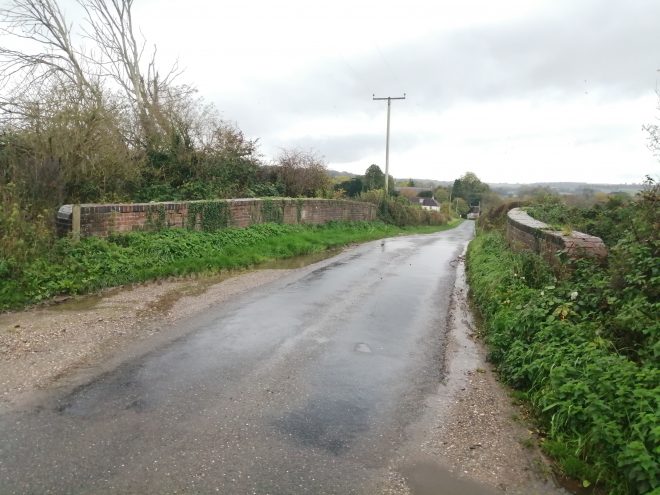Victory as bridge infilling proposal in South Downs National Park is scrapped
November 8, 2022

The National Park Authority has welcomed the scrapping of proposals to infill a Victorian railway bridge that could one day become an active travel route for walkers, cyclists, wheelchair-users and horse riders.
National Highways has confirmed that it will no longer infill a Hampshire bridge with foamed concrete.
The bridge, on Stoke Road, near Itchen Abbas, was part of the old Watercress Line that closed in the 1960s and has since become part of a 27-mile waymarked circular route for walkers. Some sections are now accessible for cyclists, horse riders and wheelchair-users and it’s hoped that more multi-user routes will open in the years ahead.
Such was the route’s importance, the National Park Authority protected it in the South Downs Local Plan as a potential future travel corridor.
Following an initial proposal to use emergency powers to infill the bridge, officers from the National Park Authority met with officials from National Highways to stress the importance of the route for access opportunities.
A spokesperson for National Highways said it had listened to people’s views and would only consider infilling “where no viable or reasonable alternative is available”.
 Trevor Beattie, Chief Executive of the South Downs National Park Authority, said: “I’m pleased that we’ve been able to work successfully with National Highways and safeguard this bridge for the future, keeping open the possibility of extending the Watercress Way to run beneath it
Trevor Beattie, Chief Executive of the South Downs National Park Authority, said: “I’m pleased that we’ve been able to work successfully with National Highways and safeguard this bridge for the future, keeping open the possibility of extending the Watercress Way to run beneath it
“The former New Alresford to Winchester Line is part of our walking and cycling strategy in the Local Plan and there are tremendous opportunities to improve access for cyclists, walkers, horse-riders and those with mobility issues. This is a wonderful victory in terms of championing the right for people to access the countryside.”
The Watercress Way charity is raising awareness about the use of the old tracks and the ambition remains, alongside rights of way authority Hampshire County Council, to create an active travel route at this location.
The old railways and droves are also important wildlife habitats, with beech, ash, wild garlic, and bluebells and regular sightings of buzzard, red kite and badgers.
